#Zilog Z80
Explore tagged Tumblr posts
Text
Looking Back
Today, 26 March 2025, is the tenth anniversary of the first time I put power to a Z80 microprocessor in a breadboard and watched it blink some LEDs.

Within a few weeks that Z80 would be completely surrounded by other chips and hundreds of wires to form my first functioning homebrew computer.

Another week and I was already removing a 68000 from a (presumed) dead motherboard, with grand ideas of moving up to the 16-bit era (but absolutely no understanding of what that would entail)

It would be another two years before the first time I put that 68000 in a breadboard and successfully used it to blink an LED.

By the time another year had rolled around that 68000 was living on a soldered breadboard and for the first time on one of my projects, it was running real software — EhBASIC.

Always looking to more challenging projects, while I was building with a 68000, I was already reading through the manual for the 68030 trying to understand how to build with a proper 32-bit microprocessor. Just one more year and I had that 68030 on a wire wrap board, blinking an LED.

The next year I was doing the most ridiculous thing I could think of — free-running a Pentium CPU on a wire wrap breadboard to blink an LED. Because I could.

By the end of the next year that 68030 had moved from its wire wrap board onto a proper printed circuit board — my first ever 4-layer PCB.

The next year saw the towering expansion of the 68030 build, adding new peripherals and functionality.

Another year and I had an all-new 68030 build on a Micro-ATX form-factor motherboard developed in just a couple months ahead of VCF Southwest 2023.

The next year I focused on developing software for my existing 68030 board stack, rather than building something new from scratch. I succeeded in developing a minimal multi-user kernel to run four instances of BASIC simultaneously.
All along in between working on these projects I have done component-level repairs on various computers, developed expansion cards for the Mac SE, built PCs both new and old, burned out hard, developed some smaller homebrew computers, had a lot of false starts, failed projects, and abandoned projects, and completed some massive projects in my day job.
Looking back at everything I've worked on over these past 10 years I am absolutely amazed at how far I have come and what I have been able to accomplish. Much of it I still don't understand how I managed to actually pull it off, and I'm not entirely sure I could duplicate my successes.
Here's to the next ten years
#homebrew computing#homebrew computer#retro computing#retrocomputing#ten years#learning new things#zilog z80#motorola 68k
81 notes
·
View notes
Text



Long Live the Z80! - David Henderson
VCF West XVIII
#vcfwxviii#vcf west xviii#vintage computer festival west xviii#commodorez goes to vcfwxviii#z80#zilog z80#trs-80 model i
38 notes
·
View notes
Text
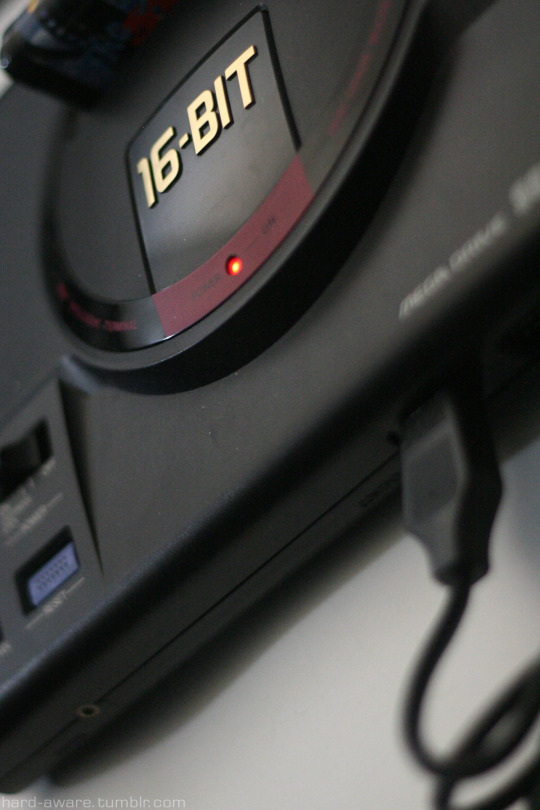
#Mega Drive#Sega Genesis#SEGA#Home video game console#video game#console#1988#Motorola 68000#Zilog Z80#Yamaha YM2612#Sega Meganet#Sega Channel#XBAND
14 notes
·
View notes
Text
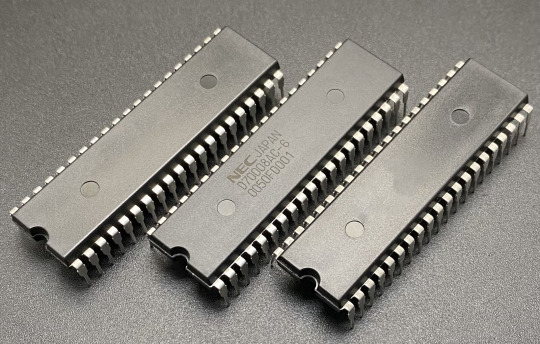
Ladies and gentlemen...
Today, we gather not to mourn, but to celebrate the remarkable journey of an iconic piece of technology—the Zilog Z80 microprocessor. As we mark the official retirement of the Z80, we reflect on its enduring legacy that began over four decades ago.
The Z80 was more than just a collection of circuits; it was the cornerstone of a technological revolution. Introduced in 1976 by Zilog, founded by Federico Faggin and Ralph Ungermann, the Z80 quickly became a beloved figure in the world of computing. Its design was a masterpiece of innovation, combining power with versatility, and it set a new standard for microprocessors.
In its heyday, the Z80 found its way into some of the most seminal computing systems of the time. It was the brain behind pioneering personal computers like the Osborne 1 and the TRS-80. It powered the Sinclair ZX Spectrum, which introduced countless individuals to the joy of programming and gaming. Moreover, it was crucial in the development of embedded systems and influenced the arcade games that many of us cherished in our youth.
The Z80 was also a tool of education. For many young programmers and engineers, it was their first introduction to the intricacies of machine code and assembly language. It demystified the inner workings of computers, making the digital world more accessible and less daunting.
But beyond its technical achievements, the Z80's real triumph was in its ability to inspire. It sparked a generation of innovators and tinkerers, many of whom have gone on to shape the modern technological landscape. Its influence can be seen in the software we use, the games we play, and the smartphones that are now an integral part of our daily lives.
As we say goodbye to the Z80, we also say thank you. Thank you for your contributions to computing, for democratizing technology, and for inspiring creativity and innovation. Your circuits may have ceased production, but your impact will resonate for generations to come.
So, here's to the Zilog Z80—may your legacy continue to teach and inspire as long as there are stories to be told about the silicon that changed the world. Rest well, old friend, your work here is done, but your journey through the annals of technology history is eternal.
2 notes
·
View notes
Text
Efemérides tecnológica: 9 de junio de 1981 se lanza al mercado la Xerox 820
Un 9 de junio de 1981, se lanza al mercado la Xerox 820. Este CP/M de 8 bits (Z80, 64KB RAM) fue el intento de Xerox de entrar al PC. Una máquina decente opacada por el IBM PC. Un capítulo olvidado de la historia tech. #retrocomputingmx #xerox820 #CPM #z800 #80sComputers
0 notes
Text

Ok that's eclectic. But also, why is a Japanese company naming itself over a shitty American standard that can't even deal with European accented characters much less Japanese characters?

Sony HitBit HB-101 (1984)
The HB-101 is part of the MSX standard, a unified home computer architecture developed by Microsoft and ASCII Corporation.
- CPU: Zilog Z80, running at 3.58 MHz
- RAM: 64 KB
- Video: Video Display Processor (VDP) with a maximum resolution of 256 x 192 pixels, supporting up to 16 colors
- Sound: Programmable Sound Generator (PSG) for audio
741 notes
·
View notes
Video
youtube
Can I Have My Apple //e and Run CP/M, Too With This Z-80 SoftCard? Part 2 (Computerized Start™ Live) 🍎⛏️👕 https://applevideos.co.uk/mac-studio/can-i-have-my-apple-e-and-run-cpm-too-with-this-z80-softcard-part-2-computerized-start-live
0 notes
Note
The original Zilog Z80 line is finally being discontinued, end of an era, rip to a real one.
What are some of the coolest computer chips ever, in your opinion?
Hmm. There are a lot of chips, and a lot of different things you could call a Computer Chip. Here's a few that come to mind as "interesting" or "important", or, if I can figure out what that means, "cool".
If your favourite chip is not on here honestly it probably deserves to be and I either forgot or I classified it more under "general IC's" instead of "computer chips" (e.g. 555, LM, 4000, 7000 series chips, those last three each capable of filling a book on their own). The 6502 is not here because I do not know much about the 6502, I was neither an Apple nor a BBC Micro type of kid. I am also not 70 years old so as much as I love the DEC Alphas, I have never so much as breathed on one.
Disclaimer for writing this mostly out of my head and/or ass at one in the morning, do not use any of this as a source in an argument without checking.
Intel 3101
So I mean, obvious shout, the Intel 3101, a 64-bit chip from 1969, and Intel's first ever product. You may look at that, and go, "wow, 64-bit computing in 1969? That's really early" and I will laugh heartily and say no, that's not 64-bit computing, that is 64 bits of SRAM memory.
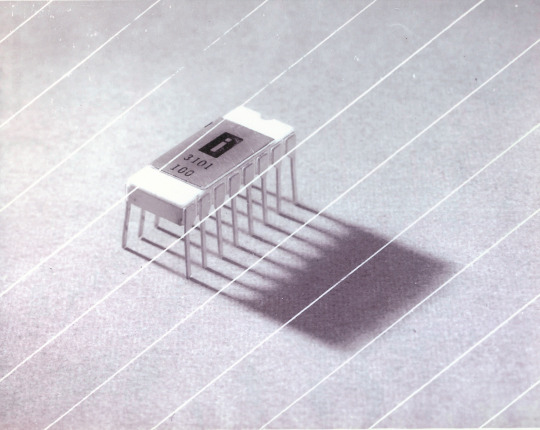

This one is cool because it's cute. Look at that. This thing was completely hand-designed by engineers drawing the shapes of transistor gates on sheets of overhead transparency and exposing pieces of crudely spun silicon to light in a """"cleanroom"""" that would cause most modern fab equipment to swoon like a delicate Victorian lady. Semiconductor manufacturing was maturing at this point but a fab still had more in common with a darkroom for film development than with the mega expensive building sized machines we use today.
As that link above notes, these things were really rough and tumble, and designs were being updated on the scale of weeks as Intel learned, well, how to make chips at an industrial scale. They weren't the first company to do this, in the 60's you could run a chip fab out of a sufficiently well sealed garage, but they were busy building the background that would lead to the next sixty years.
Lisp Chips
This is a family of utterly bullshit prototype processors that failed to be born in the whirlwind days of AI research in the 70's and 80's.
Lisps, a very old but exceedingly clever family of functional programming languages, were the language of choice for AI research at the time. Lisp compilers and interpreters had all sorts of tricks for compiling Lisp down to instructions, and also the hardware was frequently being built by the AI researchers themselves with explicit aims to run Lisp better.
The illogical conclusion of this was attempts to implement Lisp right in silicon, no translation layer.
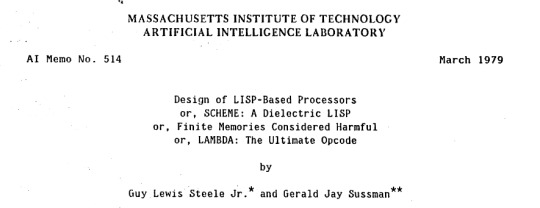
Yeah, that is Sussman himself on this paper.
These never left labs, there have since been dozens of abortive attempts to make Lisp Chips happen because the idea is so extremely attractive to a certain kind of programmer, the most recent big one being a pile of weird designd aimed to run OpenGenera. I bet you there are no less than four members of r/lisp who have bought an Icestick FPGA in the past year with the explicit goal of writing their own Lisp Chip. It will fail, because this is a terrible idea, but damn if it isn't cool.
There were many more chips that bridged this gap, stuff designed by or for Symbolics (like the Ivory series of chips or the 3600) to go into their Lisp machines that exploited the up and coming fields of microcode optimization to improve Lisp performance, but sadly there are no known working true Lisp Chips in the wild.
Zilog Z80
Perhaps the most important chip that ever just kinda hung out. The Z80 was almost, almost the basis of The Future. The Z80 is bizzare. It is a software compatible clone of the Intel 8080, which is to say that it has the same instructions implemented in a completely different way.
This is, a strange choice, but it was the right one somehow because through the 80's and 90's practically every single piece of technology made in Japan contained at least one, maybe two Z80's even if there was no readily apparent reason why it should have one (or two). I will defer to Cathode Ray Dude here: What follows is a joke, but only barely

The Z80 is the basis of the MSX, the IBM PC of Japan, which was produced through a system of hardware and software licensing to third party manufacturers by Microsoft of Japan which was exactly as confusing as it sounds. The result is that the Z80, originally intended for embedded applications, ended up forming the basis of an entire alternate branch of the PC family tree.
It is important to note that the Z80 is boring. It is a normal-ass chip but it just so happens that it ended up being the focal point of like a dozen different industries all looking for a cheap, easy to program chip they could shove into Appliances.
Effectively everything that happened to the Intel 8080 happened to the Z80 and then some. Black market clones, reverse engineered Soviet compatibles, licensed second party manufacturers, hundreds of semi-compatible bastard half-sisters made by anyone with a fab, used in everything from toys to industrial machinery, still persisting to this day as an embedded processor that is probably powering something near you quietly and without much fuss. If you have one of those old TI-86 calculators, that's a Z80. Oh also a horrible hybrid Z80/8080 from Sharp powered the original Game Boy.
I was going to try and find a picture of a Z80 by just searching for it and look at this mess! There's so many of these things.
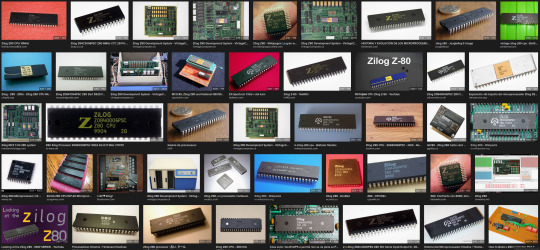
I mean the C/PM computers. The ZX Spectrum, I almost forgot that one! I can keep making this list go! So many bits of the Tech Explosion of the 80's and 90's are powered by the Z80. I was not joking when I said that you sometimes found more than one Z80 in a single computer because you might use one Z80 to run the computer and another Z80 to run a specialty peripheral like a video toaster or music synthesizer. Everyone imaginable has had their hand on the Z80 ball at some point in time or another. Z80 based devices probably launched several dozen hardware companies that persist to this day and I have no idea which ones because there were so goddamn many.
The Z80 eventually got super efficient due to process shrinks so it turns up in weird laptops and handhelds! Zilog and the Z80 persist to this day like some kind of crocodile beast, you can go to RS components and buy a brand new piece of Z80 silicon clocked at 20MHz. There's probably a couple in a car somewhere near you.
Pentium (P5 microarchitecture)
Yeah I am going to bring up the Hackers chip. The Pentium P5 series is currently remembered for being the chip that Acidburn geeks out over in Hackers (1995) instead of making out with her boyfriend, but it is actually noteworthy IMO for being one of the first mainstream chips to start pulling serious tricks on the system running it.
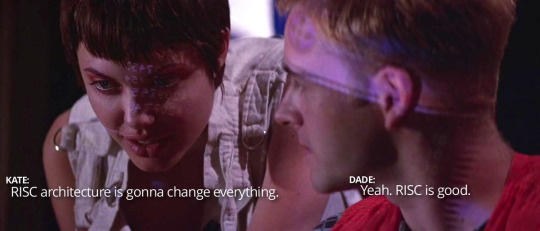
The P5 comes out swinging with like four or five tricks to get around the numerous problems with x86 and deploys them all at once. It has superscalar pipelining, it has a RISC microcode, it has branch prediction, it has a bunch of zany mathematical optimizations, none of these are new per se but this is the first time you're really seeing them all at once on a chip that was going into PC's.
Without these improvements it's possible Intel would have been beaten out by one of its competitors, maybe Power or SPARC or whatever you call the thing that runs on the Motorola 68k. Hell even MIPS could have beaten the ageing cancerous mistake that was x86. But by discovering the power of lying to the computer, Intel managed to speed up x86 by implementing it in a sensible instruction set in the background, allowing them to do all the same clever pipelining and optimization that was happening with RISC without having to give up their stranglehold on the desktop market. Without the P5 we live in a very, very different world from a computer hardware perspective.
From this falls many of the bizzare microcode execution bugs that plague modern computers, because when you're doing your optimization on the fly in chip with a second, smaller unix hidden inside your processor eventually you're not going to be cryptographically secure.
RISC is very clearly better for, most things. You can find papers stating this as far back as the 70's, when they start doing pipelining for the first time and are like "you know pipelining is a lot easier if you have a few small instructions instead of ten thousand massive ones.
x86 only persists to this day because Intel cemented their lead and they happened to use x86. True RISC cuts out the middleman of hyperoptimizing microcode on the chip, but if you can't do that because you've girlbossed too close to the sun as Intel had in the late 80's you have to do something.
The Future
This gets us to like the year 2000. I have more chips I find interesting or cool, although from here it's mostly microcontrollers in part because from here it gets pretty monotonous because Intel basically wins for a while. I might pick that up later. Also if this post gets any longer it'll be annoying to scroll past. Here is a sample from a post I have in my drafts since May:

I have some notes on the weirdo PowerPC stuff that shows up here it's mostly interesting because of where it goes, not what it is. A lot of it ends up in games consoles. Some of it goes into mainframes. There is some of it in space. Really got around, PowerPC did.
237 notes
·
View notes
Text
This is one of the few pieces of retro tech in my collection that I've owned since new. A TI-83 graphing calculator bought circa 1999 as a requirement for my high school maths class. The manual is bigger than the calculator itself which was pretty exciting for a young nerd.
These run off a Z80 and have a pretty decent version of Basic. I wrote some simple games and even back then heard rumours of people running Doom although no one ever had proof at my school. The internal battery must still have a charge because it has some of my programs and pixel art!
There's a ton of half working things on it, but the first one is a loader for the programs I considered my best. You could draw using the cursor keys or generate images using maths, so one of the programs just displays pictures. I was into Thief: The Dark Project and fractals, not much has changed there.
I first learned about Markov chain text generators around this time too and the idea of computer generated text blew my mind. I remember writing this super rudinentary sentence generator during a maths class... and suddenly I understand why I'm so bad at trig and calculus.
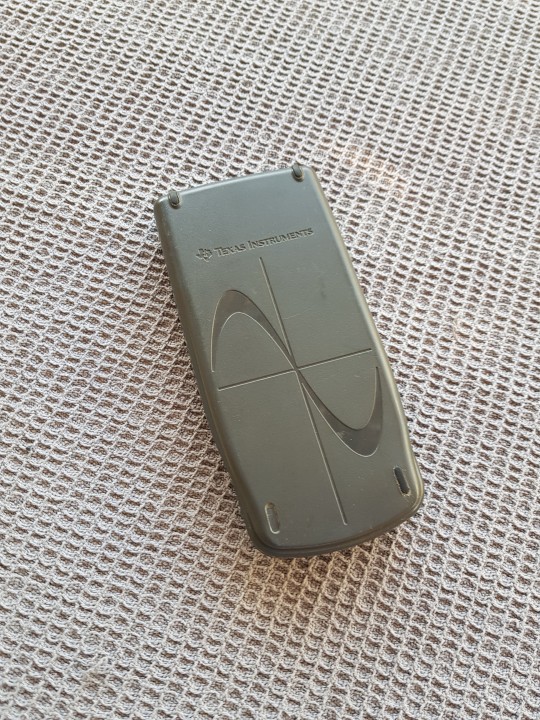
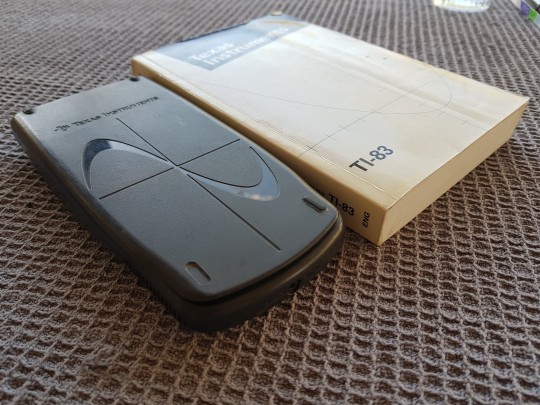


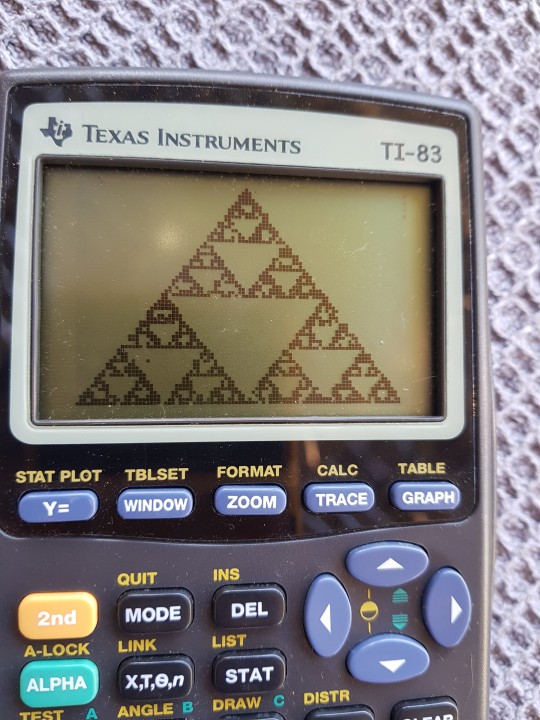
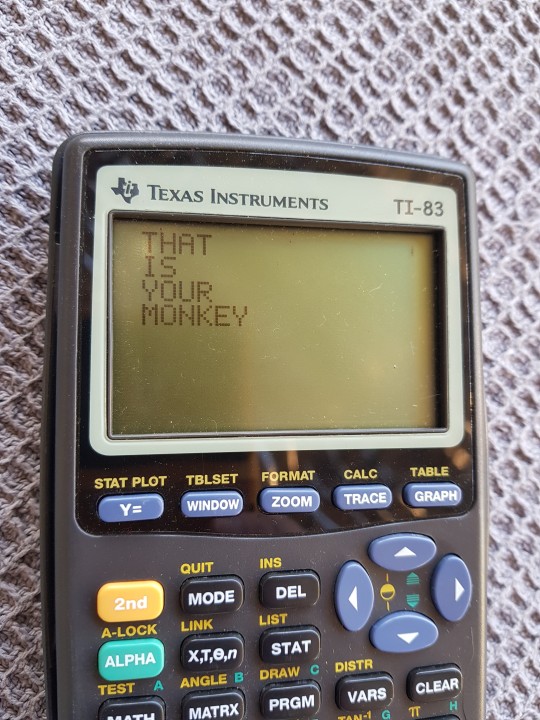

0 notes
Text
I suggested previously that a Gotek floppy emulator would probably be the easiest way to get this old Sanyo MBC-1000 booted and running again. Turns out that was even easier than I expected.
The first thing I did was reflash the Gotek with FlashFloppy to add support for more image and drive types. FlashFloppy doesn't directly support Teledisk images, but the HxC software can convert them into something both FlashFloppy and HxC can use on a Gotek. I only needed a normal 34-pin ribbon cable for the mainboard interface, and I cobbled together a USB power adapter.
And ... that was it. The computer booted right into CP/M 2.2 without any complaints.

I do still want to try developing some new hardware for this machine. Now that I have a proper operating system with BASIC and an assembler, development should go much smoother.
103 notes
·
View notes
Text

Various Z80 CPUs pulled from devices in my workshop.
32 notes
·
View notes
Text




🎄💾🗓️ Day 2: Retrocomputing Advent Calendar brings us the TRS-80! 🎄💾🗓️
Released in 1977, the TRS-80 (also lovingly called the "Trash-80") was a popular personal computer by Radio Shack and Tandy Corporation. Designed for affordability and approachability, it was one of the first mass-market computers, bringing computers into homes, schools, and small businesses.
Powered by a Zilog Z80 processor running at 1.77 MHz, the TRS-80 Model I came with 4KB of RAM (expandable to 16KB) and an 8KB ROM, preloaded with the Microsoft BASIC programming language. Its black-and-white display supported a resolution of 64x16 characters. It used external cassette tapes for storage, which offered a low-cost solution before floppy drives became more available.
The TRS-80's also had an ecosystem. Radio Shack offered complete setups, monitors, printers, and software - making it easy for beginners. The machine became a favorite for hobbyists and programmers, popularizing early text-based adventure games, educational software, and business applications.
Eventually overtaken by the IBM PC and Apple systems, the TRS-80's legacy lives on!
I had some so-so photos, but these from the Smithsonian are the best I've seen, along with their section on their site -
Have TRS-80 memories, or retro computing memories? Post’em up in the comments, or post yours on socialz’ and tag them #retrocomputing #firstcomputer #electronics see you back here tomorrow!
116 notes
·
View notes
Text
The Dutch Holborn System 6100/6140 is a very rare machine (and very funky design), only 100 of them were made. The system specifications: • Zilog Z80 CPU @ 3.5 MHz • 72 KB RAM (expandable to 192 KB) • 8-inch floppy drives
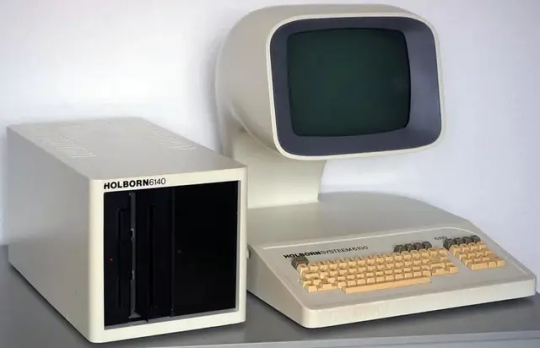
The Dutch Computer Museum has a working one, they made the video below
351 notes
·
View notes
Text

xilog holding a zilog z80 processor
25 notes
·
View notes
Text
When you're in a community of real weirdos, things are just buzzing all the time. I imagine that normal individuals, restrained by illusions like the rice-paper-thin curtain of "social pressures" and "paying jobs," can go upwards of fifteen, twenty minutes without filling any available empty space in conversation. No deal here: it's all projects, all the time, when my buddies get together.
If you don't immediately commandeer a whiteboard the second you step foot on the property, get ready to hear about the secret 16-bit I/O port mode of the Zilog Z80 microprocessor. Followed by half of a Haynes' manual worth of discussion on why it is technically incorrect to call the Dodge Neon's 3-speed automatic a true TorqueFlite. Sometimes those come from the same person. You better have a weapon of your own at the ready.
Either we've actually arrived to work on a project, or we've all convened to discuss how we're not making enough progress on our projects. It is only through disassembling 1970s South Korean payphones that we can outrun the Bad Thoughts. And when those payphones stop providing, the depth of an obsession finally mined to the core, a new project must be invented to satisfy the idle mind. This belief structure is table stakes for the kind of casual organization in which the real nuts get down to business.
While I'm sure this kind of staccato exchange of information must seem hard to follow, the moment when two weirdos discover they are working on the same thing makes it all worthwhile. Whether they co-operate or compete, nobody will be able to predict, but the realization that another sentient being in the same universe is also interested in, say, a 1981 TV game version of mahjong is more than enough motivation to produce something truly worrying for the general population.
401 notes
·
View notes